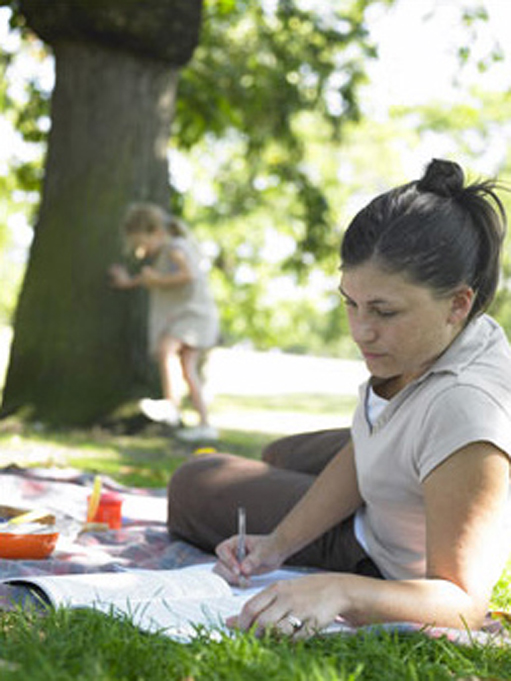Use 'Print preview' to check the number of pages and printer settings.
Print functionality varies between browsers.
Printable page generated Friday, 21 November 2025, 8:29 AM
Step 6 Self-assessment exercises: organise your writing so that the meaning of your argument or description is clear
Step 6 Self-assessment exercises: organise your writing so that the meaning of your argument or description is clear
6.1 Task 1: Structure and organisation

One of the features of good academic writing in English is that it appears to flow from one idea to another. Structure and organisation is important. For example, paragraphs would generally start with a sentence that ‘signposts’ the main topic, with all other sentences leading on from this, while linking words and phrases help to maintain this sense of flow. The following task tests your knowledge of these linking words.
Activity 4
Read the following extract from K100 Understanding health and social care and choose the appropriate linking word or phrase from the two alternative words or phrases in bold.
Care relationships are seldom just a matter of ‘doing what comes naturally’. Rather/For one thing, you may be caring for, or being cared for, by someone you would not otherwise get on with. And/Also, a care relationship has to adapt to circumstances: it may be brief, as in an acute hospital ward, or it may be very long lasting; it may be flexible according to need or/furthermore, as you saw with the home care plans in Unit 3, it may involve a high degree of regularity. In addition/Yet, some of the things you have to do together are very different from what goes on within other relationships. What is more/On the one hand, you need to be able to conduct a care relationship in a calm and consistent way, without the fallings out and reconciliations that can occur in many other kinds of relationship.
But/In other words, a care relationship has to be specially ‘constructed’. This is true even when the care relationship is built on an existing family relationship. You are not simply relating to someone according to your personal inclination. You have a particular kind of role to play. Moreover/To sum up, the other person has a role too. On the other hand/In fact, your two roles go together as a matching pair – carer and receiver of care. The one role implies the other. A care relationship involves both parties enacting their roles together in co-ordination.
Answer
Compare the following version with your selections. The appropriate linking words are in bold.
Care relationships are seldom just a matter of ‘doing what comes naturally’. For one thing, you may be caring for, or being cared for by, someone you would not otherwise get on with. Also, a care relationship has to adapt to circumstances: it may be brief, as in an acute hospital ward, or it may be very long lasting; it may be flexible according to need or, as you saw with the home care plans in Unit 3, it may involve a high degree of regularity. In addition, some of the things you have to do together are very different from what goes on within other relationships. What is more, you need to be able to conduct a care relationship in a calm and consistent way, without the fallings out and reconciliations that can occur in many other kinds of relationship.
In other words, a care relationship has to be specially ‘constructed’. This is true even when the care relationship is built on an existing family relationship. You are not simply relating to someone according to your personal inclination. You have a particular kind of role to play. Moreover, the other person has a role too. In fact, your two roles go together as a matching pair – carer and receiver of care. The one role implies the other. A care relationship involves both parties enacting their roles together in co-ordination.
The words chosen by the writer help the piece ‘hang together’: to connect up different sentences and paragraphs so that they flow on from each other.
For one thing, In addition, Also, What is more, Moreover add points which are similar, or form points to make an argument.
Or contrasts points in an argument
In other words, In fact sum up an argument
Other useful linking words and phrases are: Rather, But, Furthermore, Yet, Whereas, However, On the other hand, In conclusion
Note that And at the beginning of a sentence is not generally used in an academic assignment.
6.1.1 Self-assessment
(A) I could understand and fill in the gaps in the text quickly and correctly.
(B) I took quite a long time to do the task but eventually I managed to fill all or most of them in correctly.
(C) I had difficulty understanding the text and found it difficult to fill in the gaps.
Please now turn to your Step 8 Self-assessment grid and note in the appropriate column for this task whether your self-assessment is A, B or C.
6.1.2 Advice on organising your writing
Look at paragraphs carefully when you read texts and notice how the writer has organised them. They should start with a sentence that ‘signposts’ the main topic, with all other sentences leading on from this.
Experienced writers use linking words and phrases to organise their argument.
Note them in texts you read and practise using them in your writing to help it ‘hang together’.
Find the linking words used in the above exercise – and others you can think of in a thesaurus (a book listing synonyms – words of similar meaning) and make your own list of useful linking words.
Now go to Step 7 Self-assessment exercises: using appropriate grammar, punctuation and spelling.